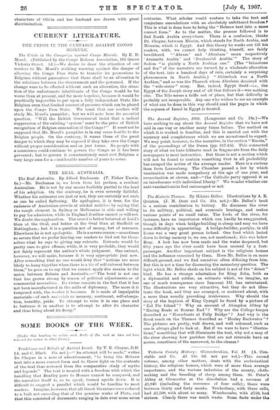The Historic Thames. By Hilaire Belloc. Illustrations by A. R.
Quinton. (J. M. Dent and Co. 21s. net.)—Mr. Belloc's book is a serious contribution to history. He discusses the river in its military, political, and economic bearings, and makes various points of no small value. The fords of the river, for instance, have an importance which can hardly be exaggerated, though in days when bridge-building is cheap and easy we have some difficulty in appreciating. A bridge-builder, pontifex, in old Rome was a very great person indeed. One ford which lasted down to living memory is, we see, not mentioned ; this was below Bray. A lock has now been made and the water deepened, but fifty years ago the river could have been crossed by a foot- passenger. Another important subject is the religious houses and the influence exercised by them. Here Mr. Belloc is on more difficult ground, and we find ourselves often differing from him. But this is not a time for discussing the monastery question. The light which Mr. Belloc sheds on his subject is not of the "driest" kind. He has a strange admiration for King John, both as a diplomatist and soldier, an estimate which, we imagine, no one of much consequence since Innocent III. has entertained. The illustrations are very attractive, but they do not illus- trate the book, and they are arranged, or scattered about, with a more than usually provoking irrelevance. Why should the story of the baptism of King Cynegil be faced by a picture of "Eel Pie Island" ? Why an account of Abingdon Abbey by "Racing Boats at Bourne End" ? Why are the College barges described as "Houseboats at Folly Bridge" ? And why is the finest reach on the Thames described as "Henley Backwater " ? The pictures are pretty, well drawn, and well coloured, such as one is always glad to look at. But if we were to have "illustra- tions," something that will illuminate the text, why not a map of the river showing how parishes that are not riverside have an access, sometimes of the narrowest, to the stream ?














































 Previous page
Previous page